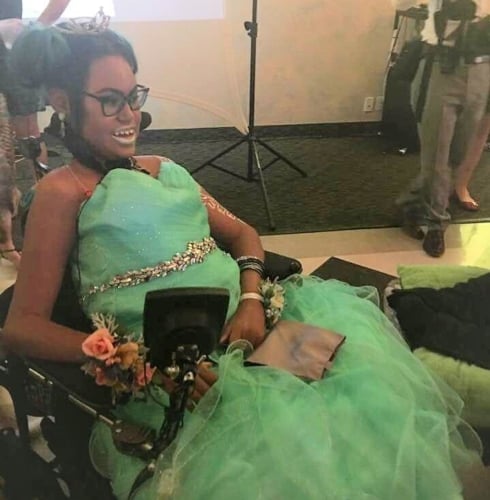Adults with SMA Question Teen Jerika Bolen’s Decision to End Life
July 25, 2016
Aaron Broverman
Jerika Bolen, an Appleton, Wisconsin, resident who has spinal muscular atrophy type 2, plans to turn off her nighttime breathing assistance at the end of August with the full support of her mother Jen.
“There were a lot of tears, but then I realized I’m going to be in a better place, and I’m not going to be in this terrible pain. I’ve been working on it and thinking about it for way longer than anyone else has,” Bolen told Appleton’s Post-Crescent News.
Many adults with SMA are saddened by her decision and disturbed her mother and the media aren’t questioning it.
“She’s not sick, she’s not terminal, she’s just in pain. Get her some help, but don’t let her die,” says Emily Wolinsky, president of NMD United, an organization by and for people living with neuromuscular diseases such as SMA. She is also the creator of Dear Julianna, a campaign in which adults with neuromuscular diseases wrote life-affirming letters to a 5-year-old child with Charcot-Marie-Tooth, a type of NMD, whose mother allowed her to die when she said she “wanted to go to heaven” instead of the hospital.
Much of the media coverage makes a point of saying most don’t survive SMA past adolescence, but there are many examples of adults with SMA who have pain, but lead rewarding lives.
“I use a ventilator most of the day, a wheelchair, and a lot of services and my life (even with pain) is pretty fantastic,” says Alice Wong, 42, founder of the Disability Visibility Project, who has the same diagnosis as Jerika.
Most with SMA have had surgeries, especially in their teens, but many wonder why the media hasn’t investigated Bolen’s 38 surgeries claim.
“Thirty-eight surgeries in 14 years is a lot,” says Wolinsky. Polling her friends, she found the most they’d had was two before age 18. “Maybe it’s the surgeries, not the diagnosis that’s exacerbating her pain.”
Still, there’s a lot of variability in lived experience, shouldn’t Bolen have the right to decide her fate when she wants to?
“Some in the disability community confuse value of life with quality of life and no one, disability or not, can make a judgment on quality of life except the person living the life. The main right she needs is the right to be herself, provided that self is fully-informed and gutsy,” says Ruth von Fuchs, president of Right to Die Canada. In Canada, assisted suicide is legal for those over 18 when death is “reasonably foreseeable.” But Bolen is only 14, and without action on her part, her death is not “reasonably foreseeable.”
Bolen’s lack of information may be the problem, just no one in the media seems to mind.
“If this was a nondisabled girl the same age who wants to end her life for similar reasons, would we be so quick to support it? Would the media be as eager to cover a person’s quest to raise money for an accessible van or home compared to a community-wide effort to put together her ‘Last Dance?” asks Wong.
Support New MobilityWait! Before you wander off to other parts of the internet, please consider supporting New Mobility. For more than three decades, New Mobility has published groundbreaking content for active wheelchair users. We share practical advice from wheelchair users across the country, review life-changing technology and demand equity in healthcare, travel and all facets of life. But none of this is cheap, easy or profitable. Your support helps us give wheelchair users the resources to build a fulfilling life. |


Recent Comments
Kelly DeBardelaben on Tips to Maintain Bowel Regularity with SCI When You Travel
Glen Gregos on Traveling With and Without a Caregiver
Sue on Controller Recall Puts SmartDrive Safety in the Spotlight